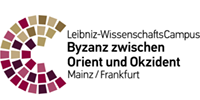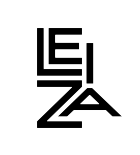East–Western Contacts within the Churchs Interior: Church Paintings in Crete during the Venetian Rule
During the Venetian rule, starting with the Concessio Cretae in 1211 and finding its end with the Ottomans` conquest in 1669, many small churches and chapels were decorated with wall paintings that seem to testify an unbroken byzantine lifestyle of Cretes inhabitants. A large amount of written sources, reporting the colonization of Venetian people, indicate an inevitable clash of the orthodox, Greek speaking and the catholic, Latin speaking parts of the islands population. Their reactions towards each other were very different. The locals naturally desired, a reunification with the Byzantine Empire, as many uprisings from the 13th to the 15th century prove. Venice on the other hand did not support their own population on the island constantly. During the Revolt of Saint Titus from 1363 to 1366 nobility from both Cretan and Venetian families united to complain against the Venetian tax demands. Thus there are different research theories on how to interpret the Cretan culture in that time. Apart from emphasizing the apparent differences or the possible assimilation and Hellenization of the Venetian colonists the latest history of research chooses a middle ground and proposes a harmonically give-and-take policy of both ethnic groups. A systematic study of the visual and written sources is still due.
While there is little to no proof of sacral buildings being used for the catholic service there is a large amount of small churches that can be identified as sites for the orthodox rite, because of their typical byzantine iconography and selection of scenes. Those buildings can be decoded as visual proof of a strong Greek-Byzantine identity during the hostile anti-orthodox rule of the Venetians.
Around 1300 A.D. small details appear in Cretan wall paintings that cannot be found in the traditional and almost unaltered byzantine pictorial program. Those so-called western influences are mostly secondary iconographical adoptions that were consistent with the orthodox doctrine show, along with historically known Venetian artists who worked on Crete, a visual cultural exchange. Some church paintings in the prefecture of Chania, round the western regions of the island, can be classified as religious space in which both Cretan and Venetian artists or rather workshops were able to practice their craft. Their precise interactions are still unknown. How did those artists work together? Was their cooperation forced by the donor or is it even possible that one church could be used for the orthodox and the catholic service and therefore was deliberately decorated in byzantine and western style? Did the artist work simultaneously even though the paintings differing in style seem to be cleanly separated in space? Is it possible to equate the different styles of painting in one room with a peaceful coexistence together of the Cretan and Venetian population? The study of those heterogeneous wall paintings aims to find out more about the cultural exchange on an artistic level that can be observed on Crete during the 14th century.
Supervision: Prof. Dr. Vasiliki Tsamakda, Johannes Gutenberg-Universität Mainz








![[Translate to Englisch:] [Translate to Englisch:]](/fileadmin/_processed_/d/0/csm_Ost-West-Kontakte_Steinert__Abb.1_15e7626c58.jpg)
![[Translate to Englisch:] [Translate to Englisch:]](/fileadmin/_processed_/e/e/csm_Ost-West-Kontakte_Steinert__Abb.2_465a469d84.jpg)




